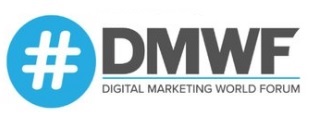
DMWF How can marketers be more predictive, rather than reactive? It is a question which makes B2B life so rich – and marketing software providers so much richer.
Today’s marketing professional has a near embarrassment of riches to choose to put in their arsenal; dashboards filled to the brim with insights, analytics to deploy wherever and whenever; social monitoring tools to spot opportunities – or threats – lurking beneath the surface. Yet it’s not about the size of your toolkit or how big your data is: it’s what you do with it that truly counts.
Brandwatch has long been regarded as a leader in the fields of consumer intelligence, market research and social listening, as an ‘all-in-one’ offering. Chief marketing officer Will McInnes told this publication last year, following the merger with fellow software provider Crimson Hexagon, that the company was ‘literally on the cusp of changing the industry again.’ “No-one else has this combination of technologies that we now have,” he added.
Kevin Virsolvy, Brandwatch senior director international of marketing and demand generation, joined the company through the Crimson Hexagon merger. He puts the challenges across simply. “Organisations are looking beyond social listening,” he tells MarketingTech. “They need to gather information from a variety of digital sources and combine that with data science and AI to bring the voice of the consumer into each and every business-critical decision.
“Brands need to adapt and evolve into digital consumer intelligence,” he adds. “Consumers have more access than ever before to information that brands have little control over. They also know the single most important fact in business: what they want.”
This is an important point to consider. If there was ever a time when brands held all the aces, that way of thinking has certainly moved into the land time forgot. Consumers can now research to an almost obsessive degree. They can go all-in on their expectations being sky-high. If your content, user experience or advertising turns out to be a pair of twos, then expect prospective customers to trump your hand by going to a competitor.
So what specific mistakes are marketing teams making with regard to social- and data-driven analysis, and how can they be rectified? Step one: don’t sit on your data and let all the opportunities for insight bleed away. “Not using digital consumer intelligence (DCI) or social listening data to drive an organisation’s decision making can be detrimental,” says Virsolvy. “It means the business is disconnected from its consumers, which isn’t where anyone wants to be.”
Step two: don’t collect data just for the sake of it. What’s more, don’t think social is the cure for all ills; combine social with survey data, search data, or internal customer platforms. “You need to make sure your house is in order when it comes to data,” Virsolvy adds. “Getting data is not difficult, but collecting meaningful data and generating actionable insights is the key piece of work that will make a difference.
“You need to be able to trust your data and, in order to do that, you need to ensure that you trust the solution you’re using.”
Step three: set your goals and decide on your use case. Are you trying to get more insight into how customers feel about your brand? Or are you focusing more on conversions? “Once your goal is defined, you can play around with the platform to get a more accurate view of what you are trying to achieve,” says Virsolvy. “At the end of the day, when we listen to our audience, we can respond to their needs more effectively.”
This is where Brandwatch’s expertise comes in. “Gathering information from solicited and unsolicited data sources can help organisations position themselves and their offerings more accurately,” Virsolvy adds. “Through mergers, acquisitions and partnerships, Brandwatch has developed a selection of solutions to adapt to the needs of modern businesses.
“By filtering out the noise, putting the time in to studying key regions, and blending social data with other sources, organisations can mature into DCI and reap the rewards.”
To continue the poker theme, being a predictive – rather than a reactive – marketer means you’re going into every hand having already seen the flop. As marketers continue to hunt for paths to ROI, the value of a trusted martech product which offers a Swiss Army knife of capabilities has never been greater.
At DMWF Virtual, on September 16, Brandwatch will be asking the question: how do we navigate the nuances of consumer behaviour in unpredictable times? Research consultant Taylor Dickson and research analyst Naomi Morrice will explore how to ‘find the needle in the data haystack’, as well as providing tips on understand consumers’ motives and how it drives action.
Find out more about the session here.
Photo by Mike Szczepanski on Unsplash

Interested in hearing leading global brands discuss subjects like this in person?
Find out more about Digital Marketing World Forum (#DMWF) Europe, London, North America, and Singapore.





